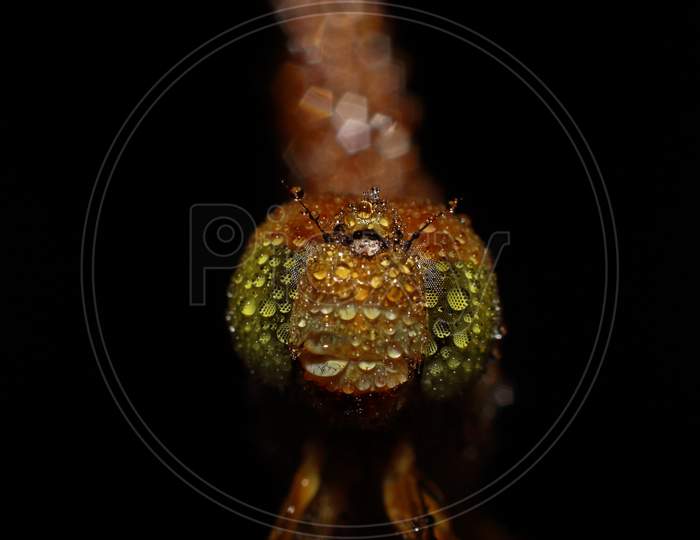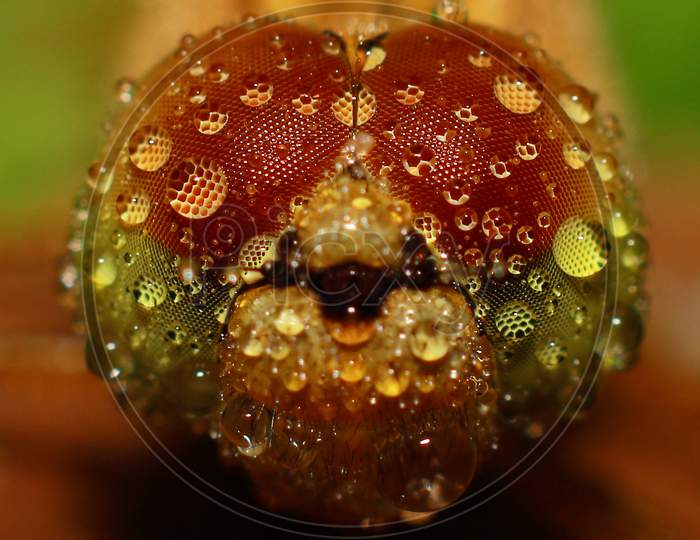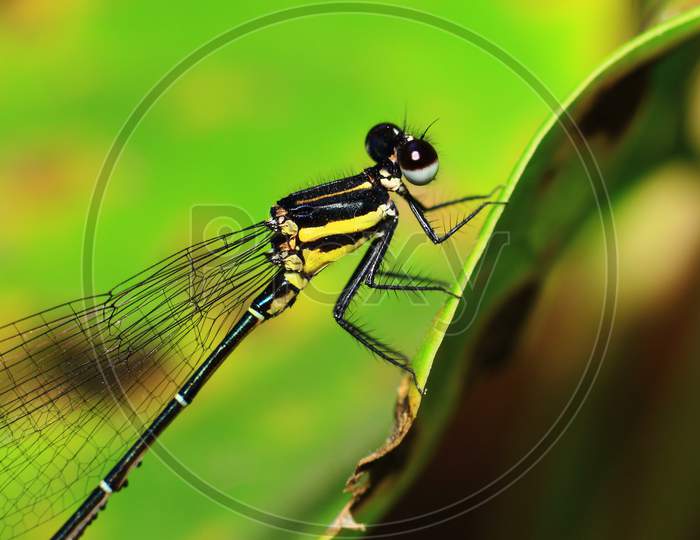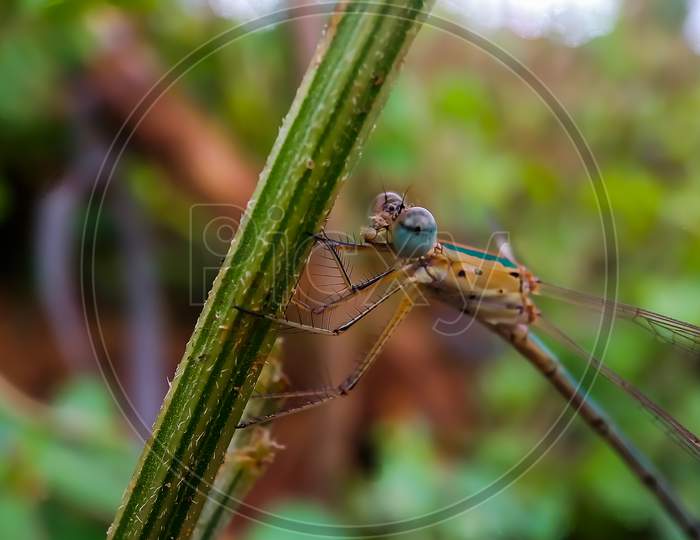- Stock Photo ID: #JD795941
- Image Credit: Picxy.com/Macrorebal
- Description:CANON EOS 1100D +50mm +Extension Tube ISO 100 F 7 1/200 The general body plan of a damselfly is similar to that of a dragonfly. The compound eyes are large but are more widely separated and relatively smaller than those of a dragonfly. Above the eyes is the frons or forehead, below this the clypeus, and on the upper lip the labrum, an extensible organ used in the capture of prey. The top of the head bears three simple eyes (ocelli), which may measure light intensity, and a tiny pair of antennae that serve no olfactory function but may measure air speed. Many species are sexually dimorphic; the males are often brightly coloured and distinctive, while the females are plainer, cryptically coloured, and harder to identify to species. For example, in Coenagrion, the Eurasian bluets, the males are bright blue with black markings, while the females are usually predominantly green or brown with black. A few dimorphic species show female-limited polymorphism, the females being in two forms, one form distinct and the other with the patterning as in males. The ones that look like males, andromorphs, are usually under a third of the female population but the proportion can rise significantly and a theory that explains this response suggests that it helps overcome harassment by males. Some Coenagrionid damselflies show male-limited polymorphism, an even less understood phenomenon. In general, damselflies are smaller than dragonflies, the smallest being members of the genus Agriocnemis (wisps). However, members of the Pseudostigmatidae (helicopter damselflies or forest giants) are exceptionally large for the group, with wingspans as much as 19 cm (7.5 in) in Megaloprepus and body length up to 13 cm (5.1 in) in Pseudostigma aberrans. The first thoracic segment is the prothorax, bearing the front pair of legs. The joint between head and prothorax is slender and flexible, which enables the damselfly to swivel its head and to manoeuvre more freely when flying. The remaining thoracic segments are the fused mesothorax and metathorax (together termed the synthorax), each with a pair of wings and a pair of legs. A dark stripe known as the humeral stripe runs from the base of the front wings to the second pair of legs, and just in front of this is the pale-coloured, antehumeral stripe. The forewings and hindwings are similar in appearance and are membranous, being strengthened and supported by longitudinal veins that are linked by many cross-veins and that are filled with haemolymph. Species markers include quadrangular markings on the wings known as the pterostigma or stigma, and in almost all species, there is a nodus near the leading edge. The thorax houses the flight muscles. Many damselflies (e.g. Lestidae, Platycnemidae, Coenagrionidae) have clear wings, but some (Calopterygidae, Euphaeidae) have coloured wings, whether uniformly suffused with colour or boldly marked with a coloured patch. In species such as the banded demoiselle, Calopteryx splendens the males have both a darker green body and large dark violet-blue patches on all four wings, which flicker conspicuously in their aerial courtship dances; the females have pale translucent greenish wings. The abdomen is long and slender and consists of ten segments. The secondary genitalia in males are on the undersides of segments two and three and are conspicuous, making it easy to tell the sex of the damselfly when viewed from the side. The female genital opening is on the underside between segments eight and nine. It may be covered by a subgenital plate, or extended into a complex ovipositor that helps them lay eggs within plant tissue. The tenth segment in both sexes bears cerci and in males, its underside bears a pair of paraprocts. Damselflies (except spreadwings, Lestidae) rest their wings together, above their bodies, whereas dragonflies rest with their wings spread diametrically apart; the spreadwings rest with their wings slightly apart. Damselflies have slenderer bodies than dragonflies, and their eyes do not overlap. Damselfly nymphs differ from dragonflies nymphs in that the epiproct and pair of paraprocts at the tip of their abdomen has been modified into caudal gills, in addition to being able to absorb oxygen through the wall of their rectum, whereas dragonflies breathe through internal rectal gills only. Damselfly nymphs swim by fish-like undulations, the gills functioning like a tail. Dragonfly nymphs can forcibly expel water in their rectum for rapid escape.
Get Indian Images for as low as Rs.100 with our Value Packs.See More
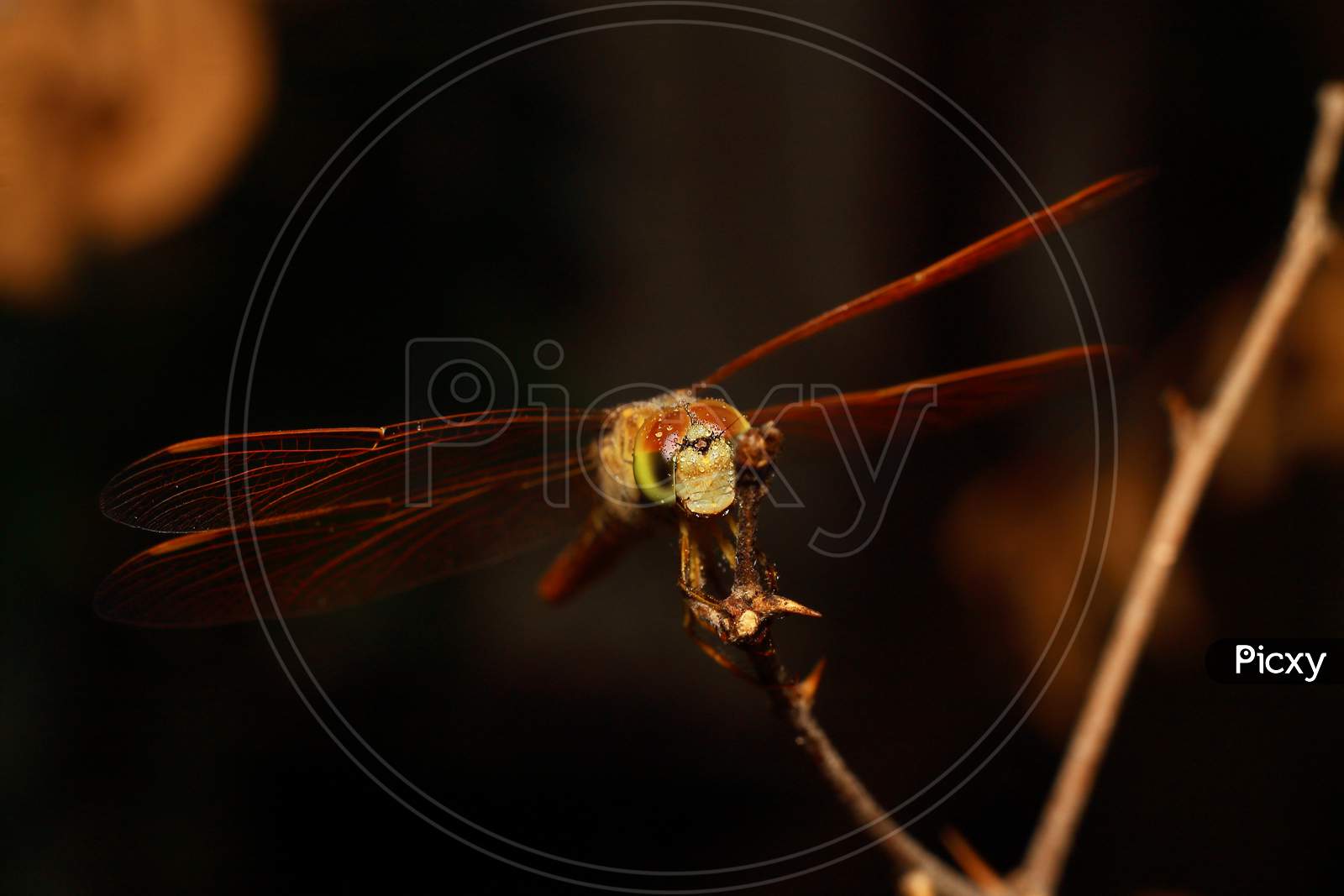

 Sample
Sample
 Share
Share